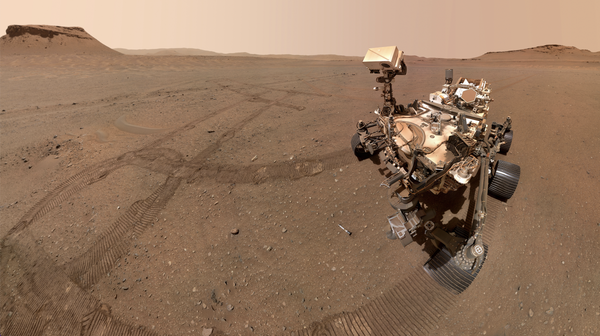The quest to unravel the Martian enigma takes a significant leap forward with the renewed partnership between the European Space Agency (ESA) and NASA for the ExoMars mission.
This ambitious endeavor, designed to search for biosignatures on the Red Planet, faced a critical setback in 2022 when ESA’s collaboration with the Russian space agency Roscosmos ended due to geopolitical tensions. However, the recent agreement between ESA and NASA infuses the mission with renewed vigor, paving the way for a 2028 launch and a return to the thrilling pursuit of extraterrestrial life.

ExoMars: Rising from the Ashes for a 2028 Launch
The ExoMars rover, named Rosalind Franklin in homage to the revolutionary crystallographer, was originally poised for a 2022 launch. However, the dissolution of the ESA-Roscosmos partnership necessitated a significant restructuring of the mission plan. A critical challenge involved finding a reliable launch vehicle – a gap that NASA’s Launch Services Program now steps in to fill. By procuring a U.S. commercial rocket, NASA ensures timely delivery of Rosalind Franklin to its Martian destination. Furthermore, NASA is contributing essential technology for the rover’s landing, including components of the propulsion system and lightweight radioisotope heater units (RHUs) – a crucial element for keeping the rover operational in the frigid Martian environment.
Rosalind Franklin: A Deep-Drilling Machine Unveiling Martian Secrets
The Rosalind Franklin rover is a marvel of technological ingenuity, specifically designed to pierce the Martian surface and delve deep into the subsurface. Unlike previous rovers that have primarily explored the surface, Rosalind Franklin boasts the remarkable capability of reaching depths of up to 6.5 feet (2 meters). This unprecedented ability is driven by the scientific understanding that the harsh radiation and extreme temperatures on the Martian surface likely render it inhospitable to life as we know it. By venturing beneath the surface and collecting samples from shielded environments, Rosalind Franklin has the potential to unearth biosignatures – chemical signatures that could indicate past or present microbial life. These biosignatures, if discovered, would revolutionize our understanding of Mars and its potential to harbor life beyond Earth.
A Testament to International Collaboration: A Shared Dream of Discovery
The reinvigorated ExoMars mission stands as a beacon of international cooperation in the vast expanse of space exploration. By combining the expertise and resources of ESA and NASA, this collaborative effort signifies a shared scientific ambition to unlock the secrets of Mars. Josef Aschbacher, Director General of ESA, emphasizes the immense scientific value of the mission, particularly the potential for groundbreaking discoveries. He highlights the unparalleled nature of the deep drilling capabilities and the captivating prospect of uncovering evidence of Martian life, even if it exists in the form of microscopic organisms. The mission reflects a collective human yearning to understand our place in the universe and explore the possibility of life existing beyond our home planet.
A New Chapter in the Search for Martian Life: A 2028 Odyssey Begins
The ExoMars mission with Rosalind Franklin at the helm marks a new chapter in humanity’s quest to understand whether we are alone in the cosmos. This collaborative effort signifies a renewed sense of purpose and a shared vision for unraveling the Martian enigma. The 2028 launch represents a critical milestone in this captivating odyssey, propelling us closer to definitively answering the age-old question: Does life exist beyond Earth? As Rosalind Franklin embarks on its journey to the Red Planet, the entire world will be watching with bated breath, eager to learn the secrets it might unveil. This international endeavor signifies a giant leap for humankind, fostering a spirit of scientific collaboration and propelling us further into the exciting quest to unravel the mysteries of Mars.



















